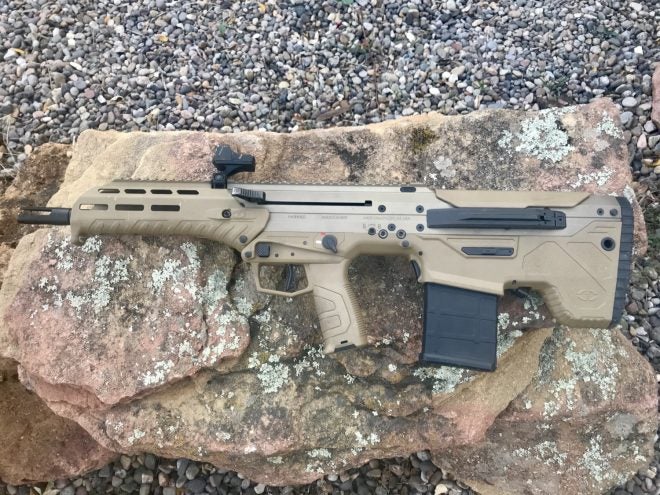Luck of the draw, we were originally supposed to get an MDR the day after the joint Nikon/Desert Tech event a couple of months ago, but wires got crossed as they sometimes do, and we just got one in a couple of weeks ago. Since there is a really high demand for reviewing them, ours was only on loan for about five days, so this review is going to be lighter on performance testing and heavier on observations and “feelsies”.
Technical Specifications
The MDR, or Micro Dynamic Rifle, is a fully ambidextrous bullpup style battle rifle chambered in .308 Win (or .223 Wylde) with the option to convert into .223 Wylde, .308 and 300 BLK (depending on what caliber you start with). 300 BLK is only available as a conversion, not a starter rifle.
- Caliber: .308 Win
- Capacity: 20 rounds
- Barrel Length: 16″ with (1:10 twist rate for .308 Win; 1:8 for .223 Wylde; 1:6 for 300 BLK)
- Overall Length: 26.2″
- Weight: 8.67 lbs (all variants)
- Color: Flat Dark Earth and Black
Observations
The rifle arrived in a nice hard case, with molded sections for all of the components which were disassembled into 3 main parts: receiver, barrel, and handguard. There was also a magazine and a “multi-tool” used for assembly.
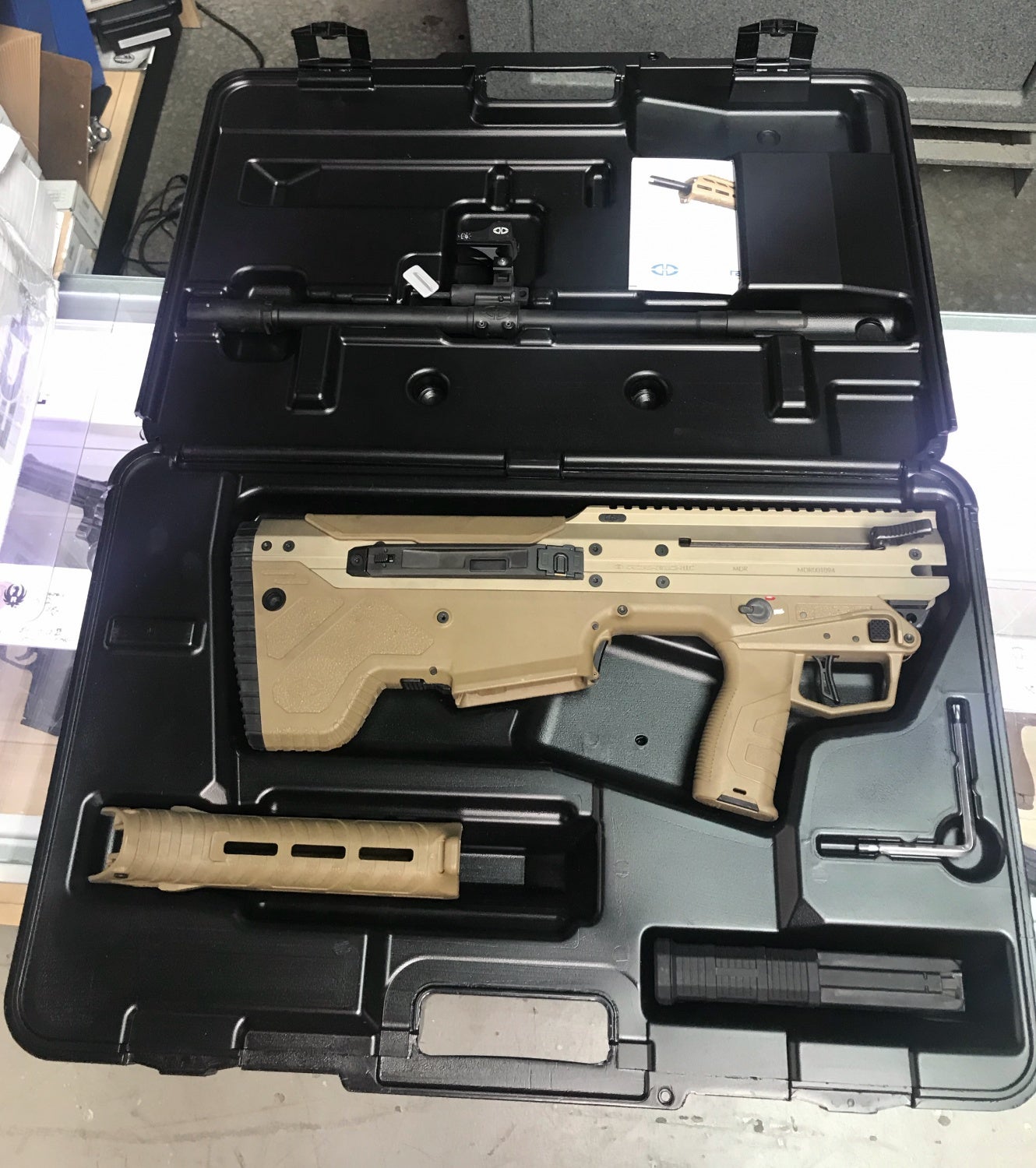
Desert Tech’s MDR (and case) right after opening the box at my FFL. Barrel and manual at the top, receiver, handguard, and multi-tool in the bottom.
I opened the instruction manual as I didn’t really do any disassembly at the Desert Tech/Nikon event a few months back. Honestly, it is pretty simple to do, but if you haven’t done it, you should definitely review the instructions—there are a number of warnings and cautions you need to pay attention to and order of operations is important.
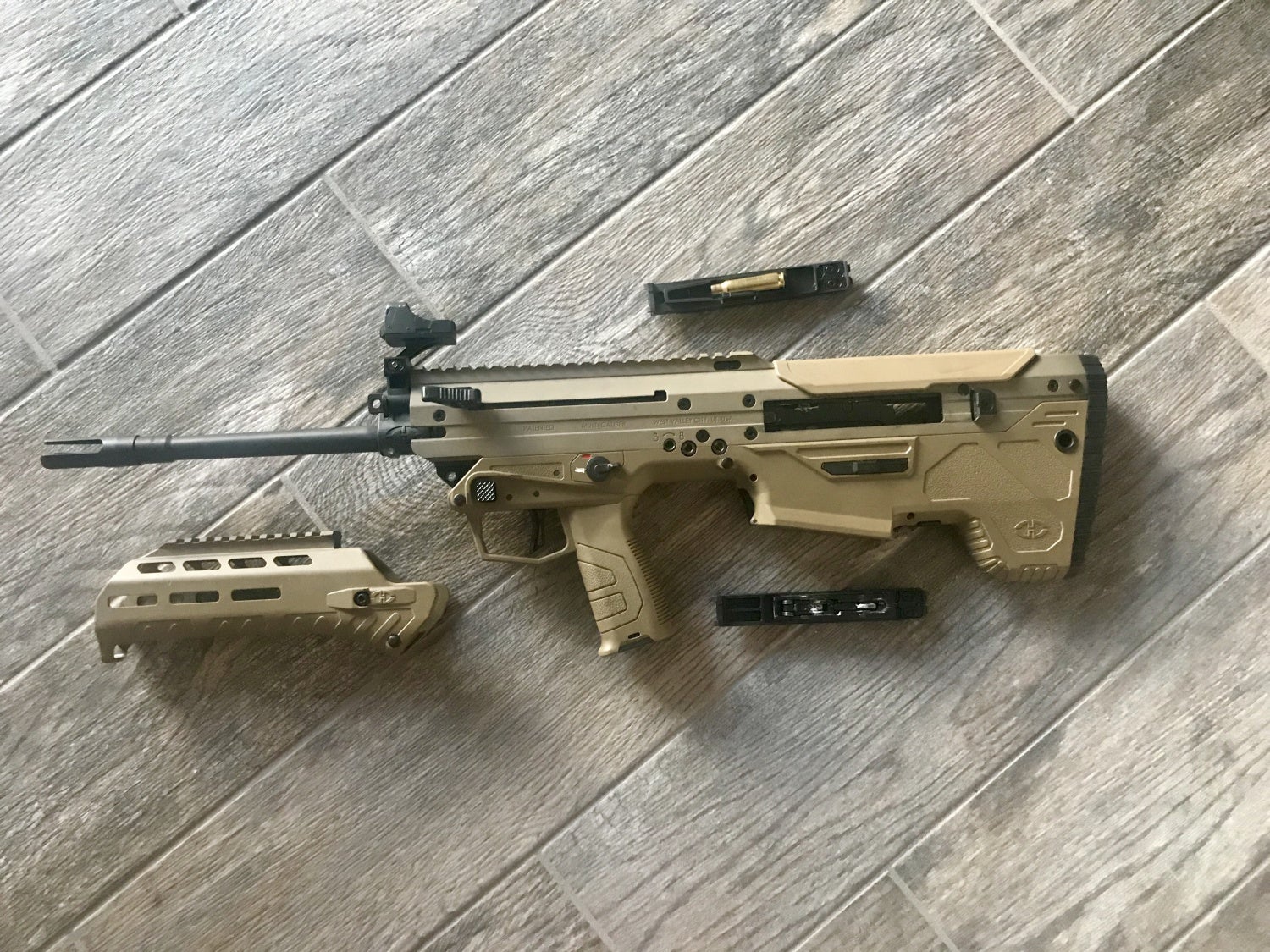
Desert Tech MDR with hand guard and ejection covers removed. I have a .308 Win round seated in the ejection ramp as it would be during the cycle.
Basically, you seat the barrel (and optic) in the receiver, tighten the locking bolts, then slide the handguard over (and tighten its bolts).
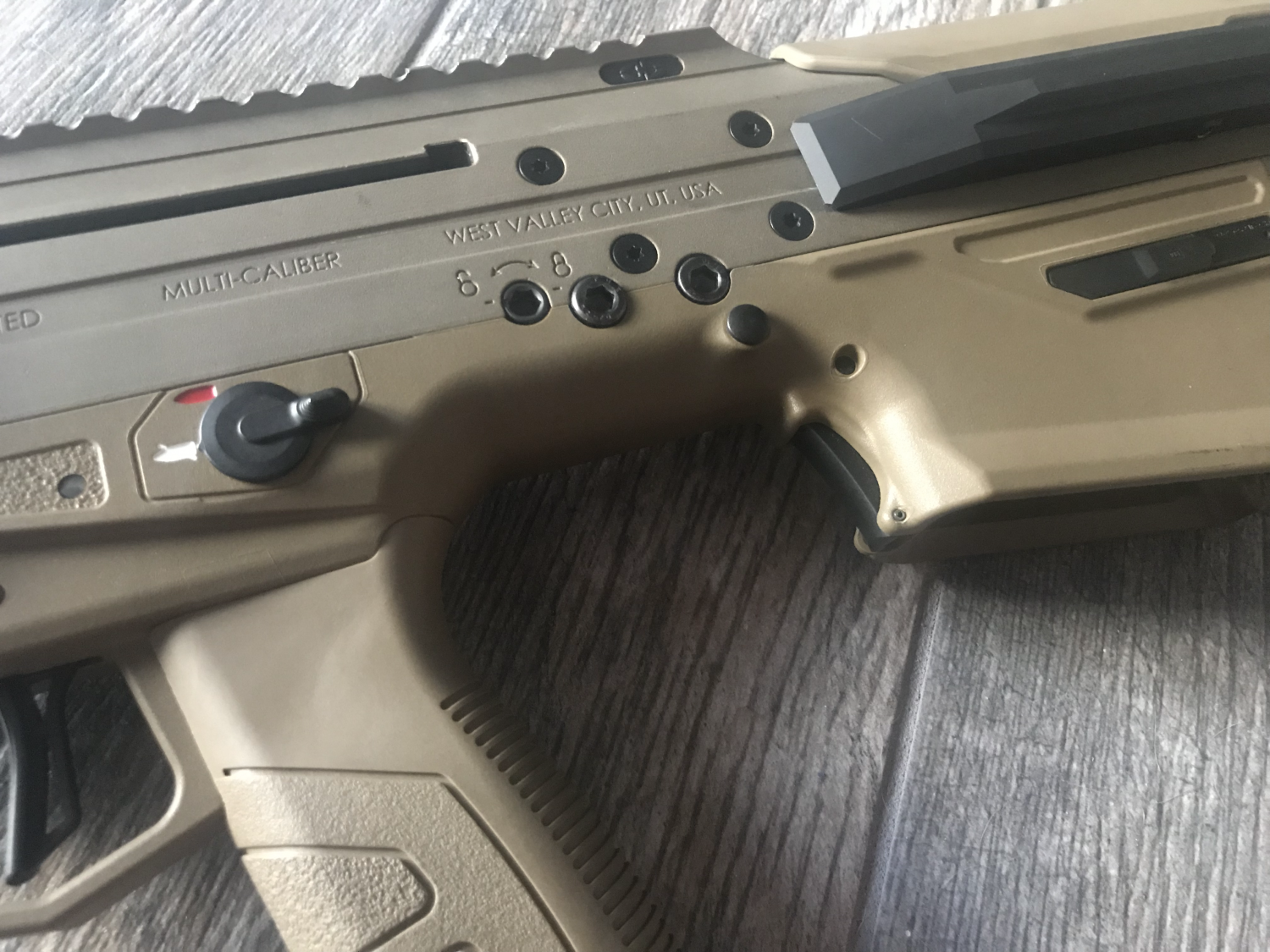
Clearly marked barrel locking point. The two hex bolts aft are the anchor bolts that require 80-inch pounds.
The instructions discuss torquing the bolts to specific ranges, but the tool that shipped with it was just a simple hex/Torx wrench. The handguard required 30 inch-pounds so I went hand tight. The barrel retention screws required 80 inch-pounds so I took that to mean hand-tight with an extra “Hnnnnuuurrrr” (the sound I made while cranking a little harder). The rifle stayed assembled during firing, so I assume I had things tight enough.
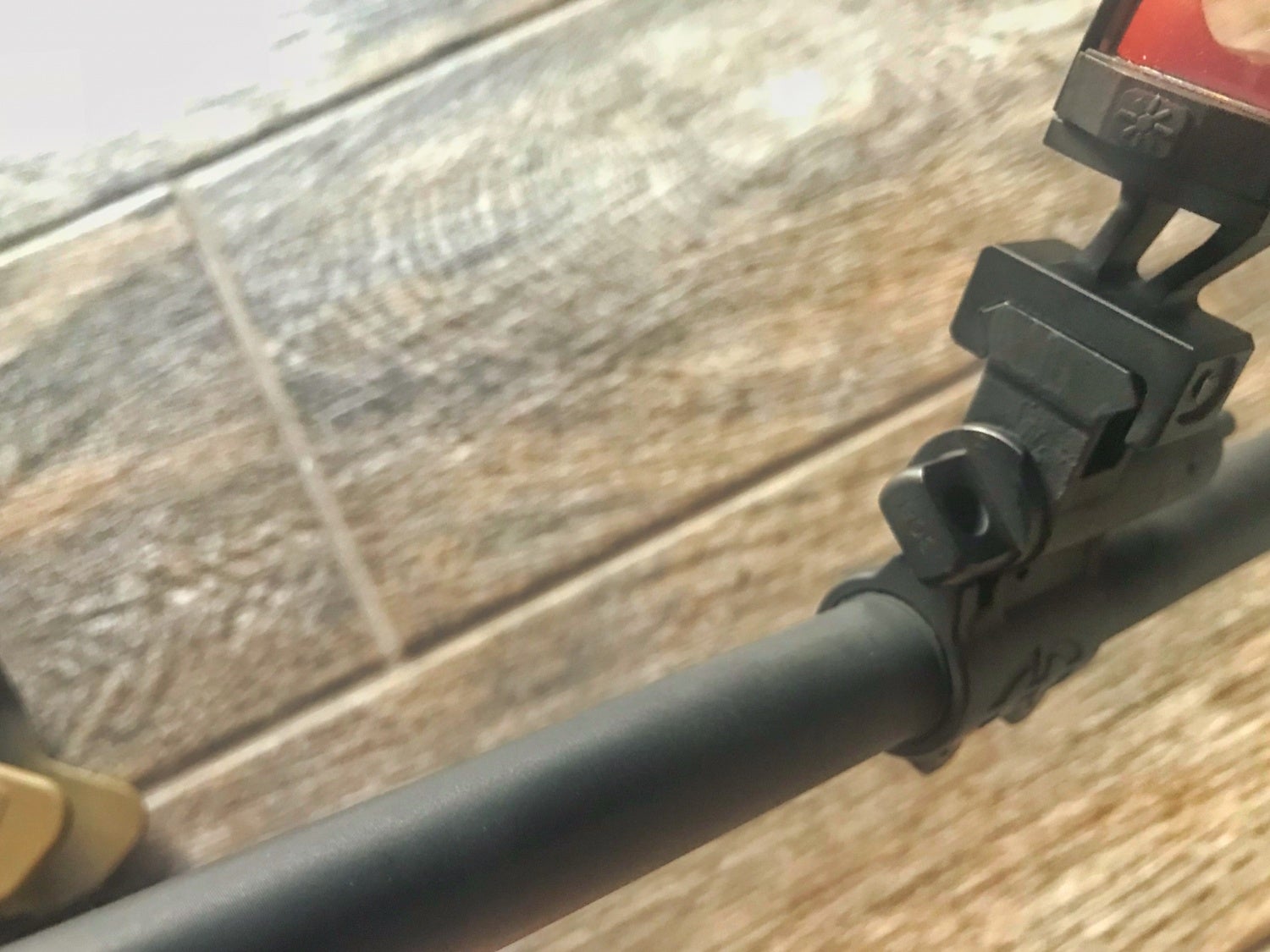
The knob with the hole is how you tune the gas system. It is currently set to “S” for suppressed though I did not shoot it suppressed.
The rifle has a tunable gas system so you can tweak for suppressed up to full. The three positions are “N” for normal operation, “A” for adverse conditions (dusty, humid, etc), and “S” for suppressed. At the “N” (normal) setting, it had slightly more recoil than the Primary Weapons System Mark 216 we used for comparison. It was significantly louder than the Mark 216. You would definitely want to run this with a suppressor (or forward projecting muzzle device) if you are going to be in close proximity to another shooter.
The rifle I was sent for review had their DT 1X, a 4MOA red dot reflex sight, attached to the barrel via the MDR mount. Unfortunately, it was dead on arrival, and I did not have a spare CR2032 to swap into it. Red dots are pretty run of the mill now so I imagine it would work fine. One of the advantages of the MDR is that you leave your optic attached to the barrel so swapping between calibres doesn’t interfere with your zero—you will be right back on once you properly put the new barrel back in place.

I ran the MDR with three different types of ammo and it cycled everything just fine. The three types I used were Aguila 160 gr, Hornady 150 gr TAP, and Hornady 178 gr AMAX.
My biggest concern is the durability of the ejection system. The port where the casing is held (and ultimately ejected) is pretty snug and I wonder how it will do when really fouled, or when there is fine dust blowing around it (which we get here in New Mexico). That said, you can definitely pop the ejection-side cover off (losing the forward ejection; it will still eject the rounds to the side).
Finis
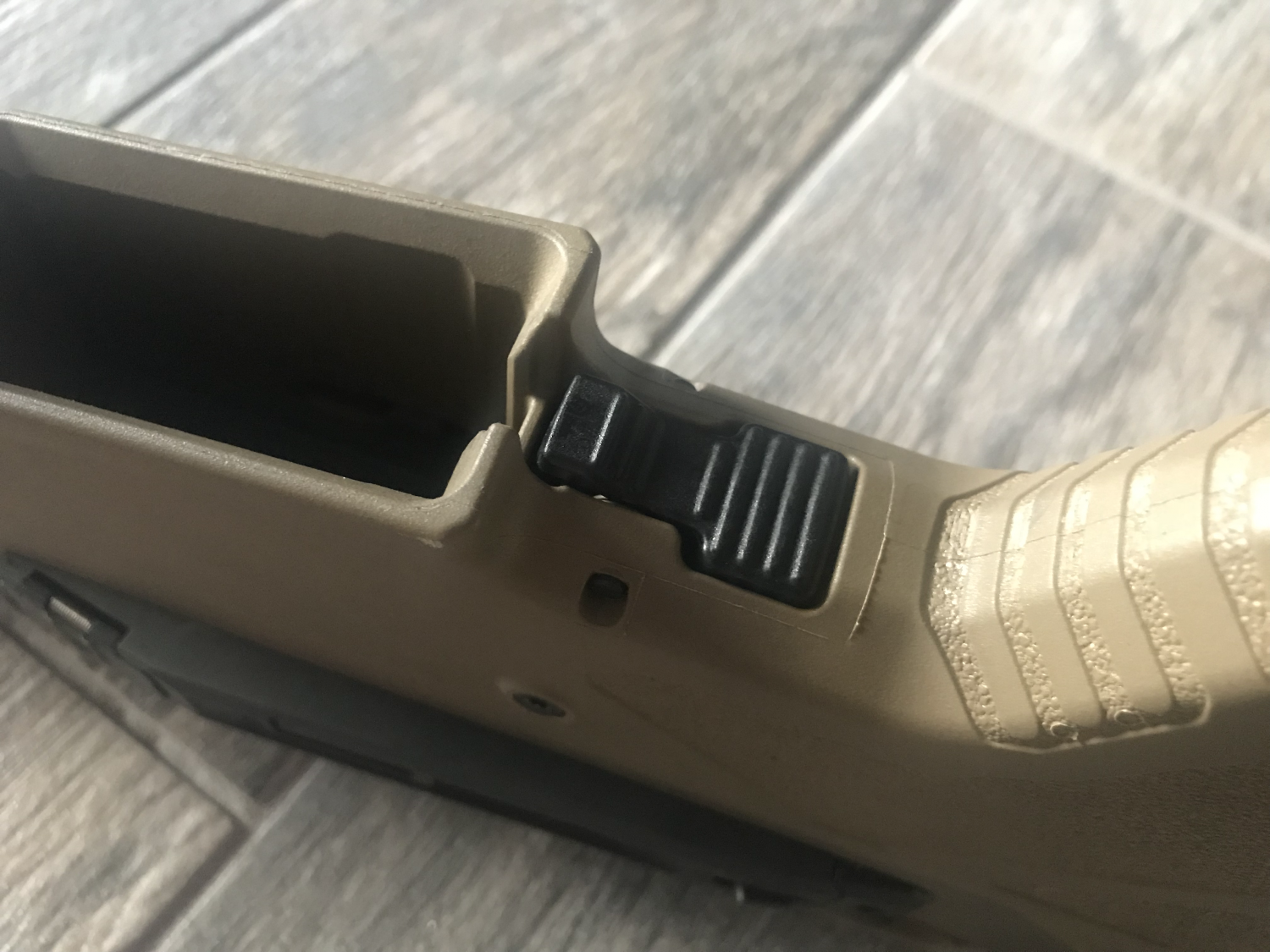
In addition to ambidextrous controls, the MDR also has controls ergonomically placed to allow for easy manipulations when you need them.
The Desert Tech MDR is really my first experience with a bullpup patterned rifle (aside from that really cool .22LR from Vadum; not quite the same league). What I really liked about the rifle is the size and balance, and that it is truly ambidextrous while maintaining very similar controls to an AR patterned rifle.
The rifle would definitely make a good truck gun, or any place you need a very compact platform. I didn’t really get the amount of time with it that I normally like to really put some miles on it, but it did well for the short time I had it (and also performed well at the Nikon/Desert Tech event).
If you are interested you can configure and order your own: https://deserttech.com/rifle-builder.php?r=4
MSRP Rifle: $2,524 for the .308 and $2,274 for the .223 Wylde. Conversion kits will run: .223: $749, 300 BLK: $829, .308: $999
 Your Privacy Choices
Your Privacy Choices
